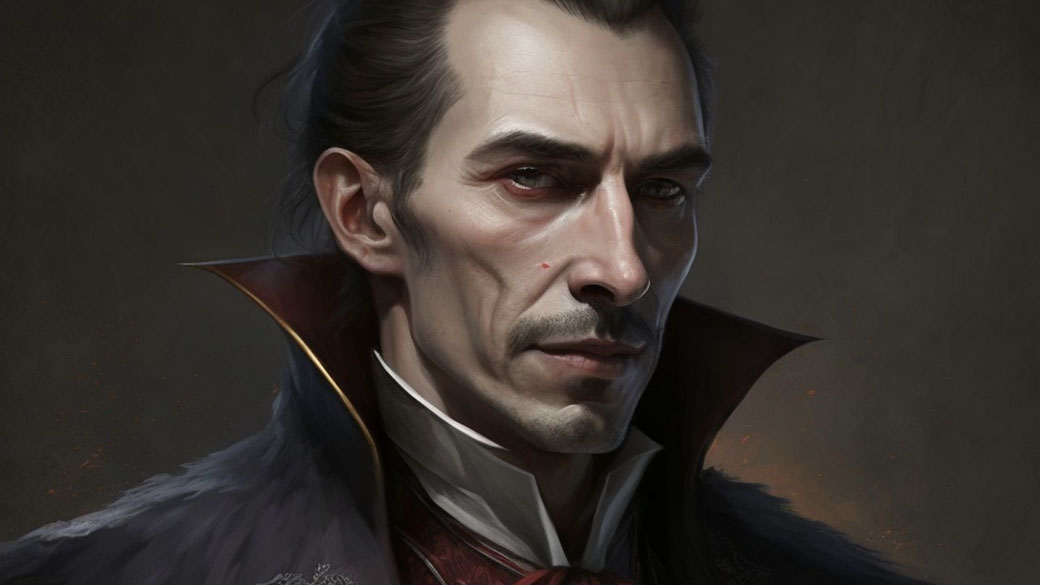Vlad the Impaler: The real-life monster who inspired Bram Stoker's 'Dracula'

As the sun sets over the Carpathian Mountains, a figure emerges from the shadows, his eyes gleaming with an otherworldly hunger.
He is Dracula, the most famous vampire in literature, but few know that his character was inspired by a real-life historical figure, Vlad the Impaler.
Officially known as Vlad III, he was a ruler of Wallachia, a region in present-day Romania, in the 15th century.
Although he ruled for a relatively short time, his reputation as a cruel and ruthless leader has lasted for centuries, earning him a place in history as one of the most notorious figures of the Middle Ages.
Early life
Vlad III was born in 1431 in the town of Sighisoara, Transylvania (modern-day Romania).
He was the son of Vlad II, who was known as Vlad Dracul, meaning "the dragon."
He got this name after being inducted into the Order of the Dragon, created by the Holy Roman Emperor Sigismund for the defense of Christian Europe against the Ottoman Empire.
Vlad III was later known as Dracula, which means "son of the dragon" in Romanian.
The family belonged to the House of Drăculești, a noble lineage with ties to the Wallachian ruling class.
From around the age of 11, Vlad III was held for six years as a political prisoner of the Ottoman Empire, where he learned the art of warfare and developed a fierce reputation as a fighter.
When he returned to Wallachia in 1448, he found that his father and older brother had been assassinated by political enemies.
He embarked on a campaign to regain his father's seat and ruled briefly for two months, before being overthrown.
He was forced to flee Wallachia and lived in exile for the next few years. He spent time in various courts and gradually built political alliances, including with John Hunyadi, the Hungarian military leader.
With the help of Hungarian and Wallachian forces, Vlad III seized the throne in 1456 and began his second reign as the ruler of Wallachia. He ruled until 1462, and then briefly again in 1476 before his death.
Greatest crimes
Vlad III was known for his brutal tactics, from which he earned the nickname "the Impaler."
His preferred method of execution was impalement, in which a person was skewered through the rectum and then hoisted up on a stake.
This method of execution was slow and agonizing, and it was intended to strike fear into the hearts of his enemies.
Vlad impaled thousands of Ottoman prisoners outside the city of Târgoviște, reportedly leaving a "forest of stakes" that horrified an advancing foreign army.
Vlad III was not only brutal towards his enemies but also towards his own people.
He was known for his strict laws and harsh punishments, which included impalement for even minor offenses.
His rule was defined by a reign of terror that lasted for around six years.
Chroniclers of the time claimed he was responsible for the deaths of over 20,000 people.
Despite his reputation for cruelty, Vlad III was also seen as a hero by many in Wallachia, who saw him as a defender of their land against the invading Ottoman Empire.
He was known for his bravery and his determination to protect his people, even if it meant using brutal tactics.
Inspiration for Dracula
Although Vlad III was a real historical figure, his reputation as a bloodthirsty vampire did not come until much later.
In 1897, Bram Stoker published his novel, Dracula, which drew inspiration from the legend of Vlad the Impaler.
Stoker was influenced by the historical figure and used elements of his life and reign in his novel.
However, he also added supernatural elements to the story, including the character of Dracula as a vampire who feeds on the blood of his victims.
Dracula has since become one of the most iconic and recognizable figures in popular culture, and the novel has inspired countless movies, TV shows, and other works of fiction.

There are several elements of the Dracula character that are based on Vlad the Impaler, although Bram Stoker also added fictional elements to the character.
One of the most obvious connections is the name "Dracula."
Stoker likely chose the name for its associations with evil and danger.
Another connection between the two is their shared reputation for brutality. Both characters are associated with death and violence.
Stoker may have also drawn inspiration from the historical context of Vlad III's reign, particularly his role as a defender of Wallachia against the invading Ottoman Empire.
In Dracula, the eponymous character is portrayed as a foreign invader who threatens the safety of England.
Despite these connections, it's important to note that Stoker also added fictional elements to the character of Dracula, such as his ability to transform into a bat and his vulnerability to sunlight and garlic.
These elements were not inspired by Vlad III or any other historical figure, but were instead created by Stoker to add to the character's mystique and to make him a more formidable opponent.
What do you need help with?
Download ready-to-use digital learning resources
Copyright © History Skills 2014-2025.
Contact via email
With the exception of links to external sites, some historical sources and extracts from specific publications, all content on this website is copyrighted by History Skills. This content may not be copied, republished or redistributed without written permission from the website creator. Please use the Contact page to obtain relevant permission.





